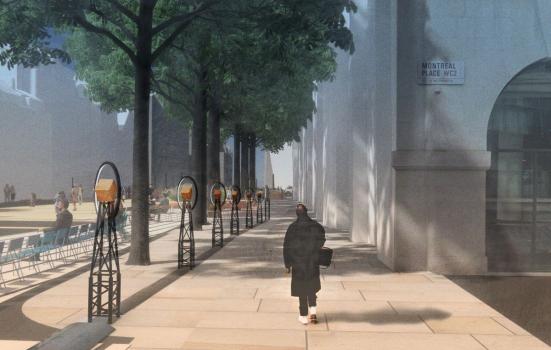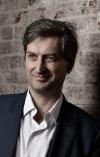A long-held vision to pedestrianise one of the most polluted areas in London has been realised. Jonathan Reekie outlines how a partnership between the local authority, business and cultural institutions was crucial to making it happen.

The Strand
Amid the immense challenges facing the arts, London’s largest new public space for a decade has now opened. It’s a project that has the arts and learning at its heart and, against the tide, has been given an unintended helping hand by Covid.
Strand Aldwych is a new creative thinking quarter, a place for collective innovation and experimentation at the east end of the Strand. It acts as meeting point between several iconic institutions - King’s College London, Somerset House, 180 Strand, the LSE, The Courtauld Institute, Society of London Theatres, Northbank Business Improvement District (BID) as well as local business, community and the wider public.
The idea of pedestrianising Strand Aldwych is not new. About 8 years ago, Northbank BID commissioned a feasibility study to look again at this idea in detail, encouraged by Westminster City Council who own and control the highway. I was invited to join the BID board and agreed as the project had so much creative potential.
BIDs provide additional or improved services, identified by local businesses, within their geographical area – for example safety, cleaning or environmental measures. A BID includes local ratepayers, not just businesses, and in the case of Northbank BID, it includes major arts organisations, universities and the church - the jewel that is St Mary-le-Strand.
Given the area has so many prominent organisations, it was natural the project should be shaped by this unique confluence of creativity and learning. It was given initial momentum by environmental research from King’s College that revealed Strand Aldwych to be one of the most polluted places in the UK. This idea offered an imaginative solution.
A project firmly rooted in place
There are several reasons why we have succeeded in making this ambitious project happen. The main effort has come from local stakeholders. We’ve evolved the vision together, from the ground up. While we used consultants to help design the space, the rest of the work we’ve done ourselves involving resident workers such as the artists and makers at Somerset House - the home of cultural innovators; city experts from King’s College London and the LSE; and curators and researchers from The Courtauld.
This has made the project firmly rooted in place. Crucially, unlike the usual public-private partnerships that develop our towns and cities, the fact that many of the stakeholders sit in the middle ground between public and private sectors has lent the project a healthy blend of creativity and research with a focus on public benefit.
From these ingredients, we've developed a vision where art, performance and research will emerge and evolve, breaking down walls, exploring life-changing ideas, and embracing the wider community in the process.
St Mary-le-Strand church been reclaimed from traffic and becomes a visual centre-point, brought back to life in the most people-focused and sustainable way. The different perspectives that the area is known for will be brought to the fore, and the crossovers and connections between the various participating organisations, publics, age groups and institutions will be the richest ground possible for new ideas of the future.
Stakeholders working in partnership
Key to its success will be the open relationship the space has with the city at large. It will be at the heart of public life, in constant conversation with the public mind. Everyone is welcome to this safe, healthy and accessible space where ideas and artforms are continually under construction, and often inviting the involvement of all.
Over time, it will be a catalyst for further activity, innovation and entrepreneurialism in the area, enabling growth for the community and the city centre. We fully intend that at Strand Aldwych, ideas and imagination will be born and celebrated, encouraging community, over time, to engage and flourish.
In addition to the complete buy-in of the local stakeholders, brought together by the Northbank BID, the project has had the total support of Westminster City Council which, post-feasibility study, took over the project and funded the changes. It also benefitted from the good timing of coinciding with Transport for London’s major review of bus routes.
All these factors, and importantly the way Covid made us rethink our cities, have come together to make this radical change possible.
The VoiceLine
For the project launch, Northbank BID commissioned installations from local artists - the first being Nick Ryan’s The VoiceLine. Nick is an Emmy award-winning sound artist and resident of Somerset House Studios and his The VoiceLine is a unique instrument for voice, sound, music and audio storytelling. It is shaped by the new site and spans the length of the space (170m).
The installation is brought to life through a partnership with the BBC in its centenary year. It is close to Marconi House from where the BBC first broadcast on 14 November 1922 and runs past Bush House, the former home of BBC World Service.
The VoiceLine aims to engage the public with voices from the past, drawing on the early innovations of radio, the famous voices of the news and the multiple tongues of the BBC World Service. Among the many sounds visitors encounter are some of the earliest radio broadcasts, the voices of women pioneer broadcasters and memories of Bush House.
But more than radio broadcasts, there are spatial urban field recordings of cities around the world, and recordings from natural environments from the forests of Canada to the sound of melting ice in the Artic. King’s students have gathered visions of the future which can be heard alongside recreations of the sound of the Strand’s pre-industrial traffic. And visitors can try to decipher the mysterious utterances of ‘Number Stations’ - coded messages broadcast by foreign intelligence agencies.
Jonathan Reekie is Director of Somerset House Trust.
@SomersetHouse![]()
The VoiceLine is open to the public until March 2023, with a daily schedule of audio works from 8am to 8pm. Further information including a map can be found on The Voiceline website.




